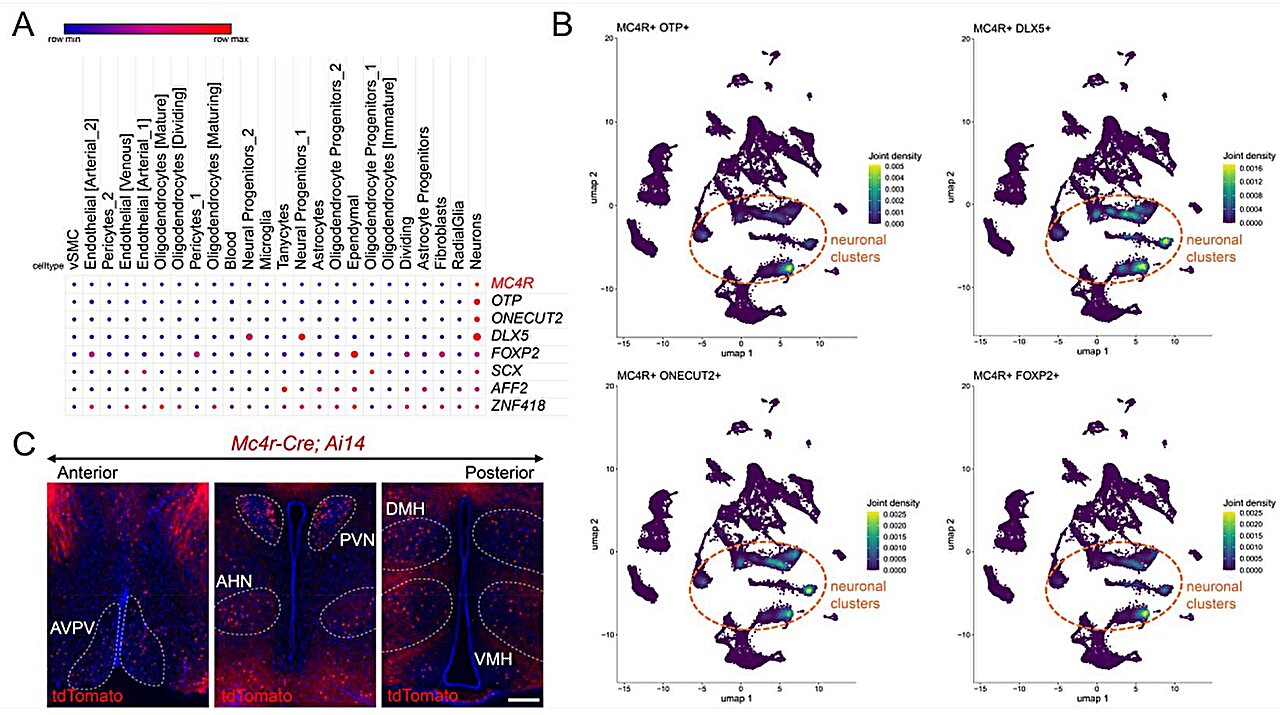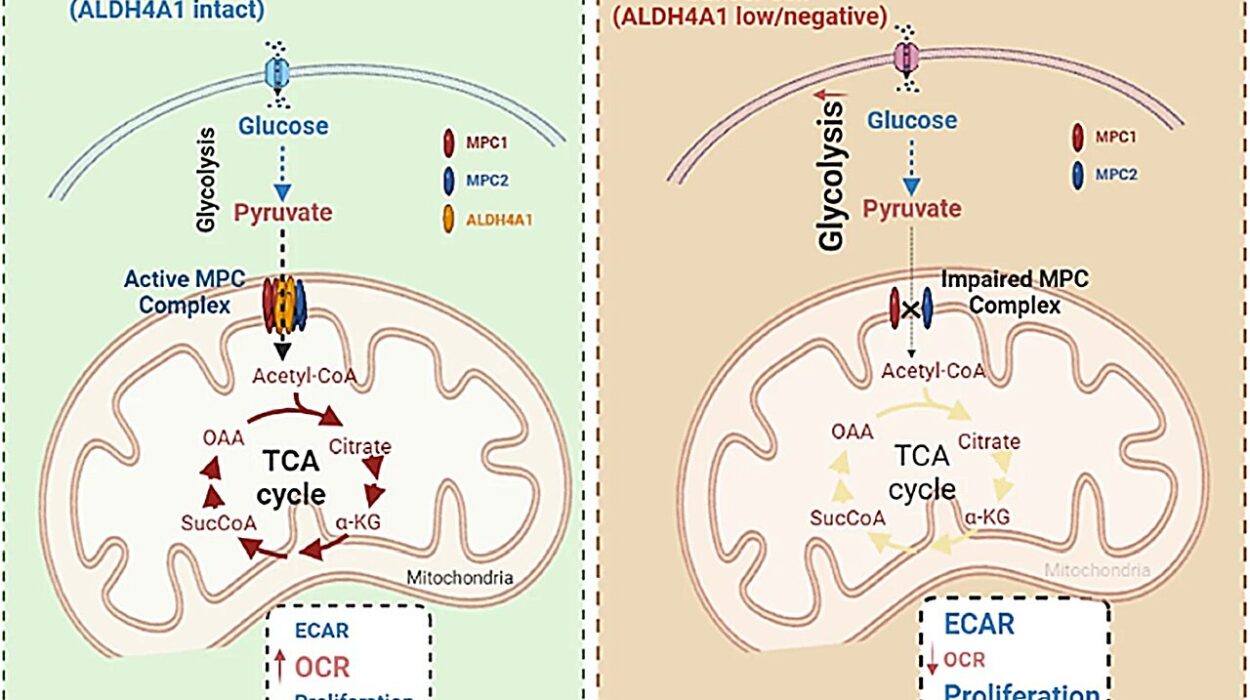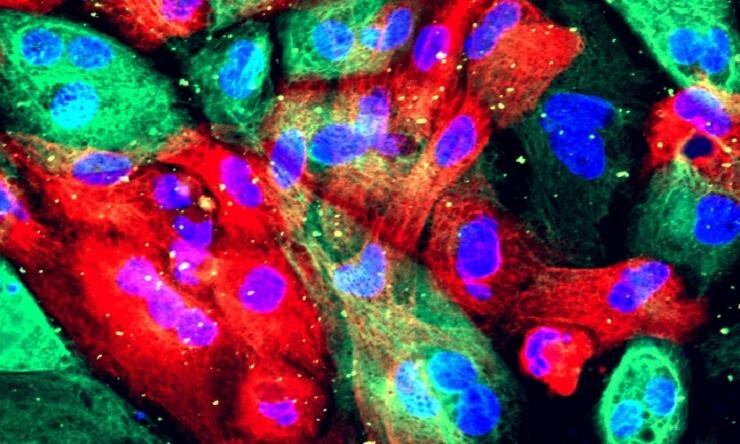Obesity has become one of the most pressing health issues of the modern age, with over a billion individuals worldwide currently affected. The escalating prevalence of obesity contributes to an increased risk of various diseases, including diabetes, heart disease, and certain cancers. However, new insights into the genetic and molecular mechanisms underlying obesity have brought a glimmer of hope for developing targeted treatments. A recent study led by researchers at UT Southwestern Medical Center reveals that mutations in a gene called OTP can lead to obesity by regulating another gene already being targeted by an anti-obesity drug. This discovery could pave the way for new therapeutic approaches for specific forms of obesity.
Understanding the Molecular Pathways Behind Obesity
The regulation of eating behavior and body weight is largely controlled by the hypothalamus, a part of the brain that plays a crucial role in maintaining homeostasis. Within the hypothalamus, a receptor called the melanocortin 4 receptor (MC4R) plays a key role in regulating hunger and satiety. MC4R is a protein found on the surface of neurons in the hypothalamus. It works by binding to other proteins that either suppress or stimulate hunger, thus helping to regulate body weight.
Previous research has shown that mutations in the MC4R gene can have significant effects on obesity. Loss-of-function mutations that impair MC4R signaling are strongly associated with childhood-onset obesity, whereas mutations that enhance MC4R activity seem to have a protective effect against obesity. These findings indicate that MC4R is a critical component of the brain’s mechanisms for controlling eating behavior and body weight.
While the connection between MC4R and obesity has been well-documented, relatively little is known about how the production of MC4R is regulated at the molecular level—specifically, how neurons in the hypothalamus control the amount of this receptor present on their surface. This is where the work of Dr. Chen Liu and his team at UT Southwestern comes into play.
The Discovery of OTP’s Role in Obesity
To uncover the molecular mechanisms behind the regulation of MC4R, Dr. Liu’s team set out to investigate the genes involved in MC4R expression. By conducting experiments on mice, the researchers aimed to identify the factors that control the production of MC4R in hypothalamic neurons.
Through their research, the scientists identified a gene called OTP as a key regulator of MC4R expression. The OTP gene encodes a protein that directly binds to DNA sequences responsible for regulating the production of MC4R. This connection raised the possibility that OTP could play an important role in the production of MC4R and, in turn, contribute to the regulation of body weight.
To test this hypothesis, the researchers genetically engineered mice to turn off the OTP gene. These altered mice, when placed on a high-fat diet, showed a dramatic increase in weight gain compared to their normal counterparts. The mice became obese due to their increased food intake, which was further confirmed through behavioral studies that showed a rise in appetite.
A closer examination of the altered mice revealed that they were producing significantly less MC4R compared to their littermates. This finding provided strong evidence that OTP plays a crucial role in regulating MC4R production in hypothalamic neurons and that a lack of OTP function could lead to obesity by disrupting the normal regulation of hunger and energy balance.
Linking OTP Mutations to Human Obesity
The next step in the study involved collaboration with a team at the University of Cambridge, which had already identified a link between rare genetic mutations in the OTP gene and obesity in some children. The team studied children who exhibited severe obesity and found that certain mutations in the OTP gene led to a loss-of-function of the gene’s protein. These mutations were thought to be responsible for their severe obesity, high cholesterol, fatty liver disease, and type 2 diabetes.
To validate these findings, the UT Southwestern team engineered mice that carried the same genetic mutation present in one of the affected children. The results were strikingly similar to the symptoms observed in the child: the mice developed early-onset obesity, high cholesterol, fatty liver disease, and type 2 diabetes. These conditions mirror the health issues seen in individuals with loss-of-function OTP mutations, confirming the crucial role of OTP in obesity.
Setmelanotide: A Potential Treatment for OTP-Related Obesity
The study also explored potential therapeutic avenues for treating obesity caused by mutations in the OTP gene. One promising option came in the form of setmelanotide, a drug that targets MC4R signaling. Setmelanotide has already been used in treating rare forms of genetic obesity caused by deficiencies in MC4R function. When the UT Southwestern researchers administered setmelanotide to the genetically altered mice with OTP mutations, the results were remarkable. The treatment led to significant improvements in the health problems the mice faced, including reductions in obesity, cholesterol levels, and fatty liver disease, while also addressing insulin resistance associated with type 2 diabetes.
These findings suggest that setmelanotide could be a potential treatment for a subset of obesity patients, particularly those with mutations in the OTP gene. Furthermore, Dr. Liu emphasized that OTP is one of several genes now implicated in human obesity. A broader genetic search of the UK Biobank, a large genetic registry in the United Kingdom, revealed additional cases of obesity associated with mutations in OTP, indicating that this genetic pathway could be an important target for future obesity treatments.
A New Target in the Fight Against Obesity
The discovery that OTP mutations can lead to obesity by altering MC4R regulation represents an exciting development in the ongoing quest to understand and treat obesity. With over a billion people worldwide suffering from obesity, new therapeutic strategies are urgently needed. By targeting the molecular pathways that regulate hunger and energy balance, such as OTP and its influence on MC4R, researchers are taking significant strides toward more personalized and effective obesity treatments.
Setmelanotide and similar drugs may offer hope to individuals suffering from genetic forms of obesity caused by MC4R signaling defects, including those associated with OTP mutations. However, the study’s findings also highlight the complexity of obesity as a disease and underscore the importance of continued research into the genetic and environmental factors that influence body weight regulation.
In addition to its scientific implications, this study provides an important reminder of the need for a tailored approach to tackling obesity. Rather than relying on a one-size-fits-all solution, future obesity treatments will likely involve identifying and targeting the specific genetic causes that drive the condition in different individuals.
Conclusion
The research led by Dr. Chen Liu and his team at UT Southwestern Medical Center brings us closer to understanding the genetic and molecular foundations of obesity. The discovery that mutations in the OTP gene contribute to obesity by controlling the production of MC4R is an exciting breakthrough. With the potential to target this pathway through drugs like setmelanotide, researchers now have a promising tool for treating certain forms of obesity. This study not only sheds light on the complexities of weight regulation but also underscores the potential for genetic-based therapies to address the global obesity epidemic, offering hope for millions affected by this debilitating condition.
Reference: Baijie Xu et al, Orthopedia regulates melanocortin 4 receptor transcription and energy homeostasis, Science Translational Medicine (2025). DOI: 10.1126/scitranslmed.adr6459






